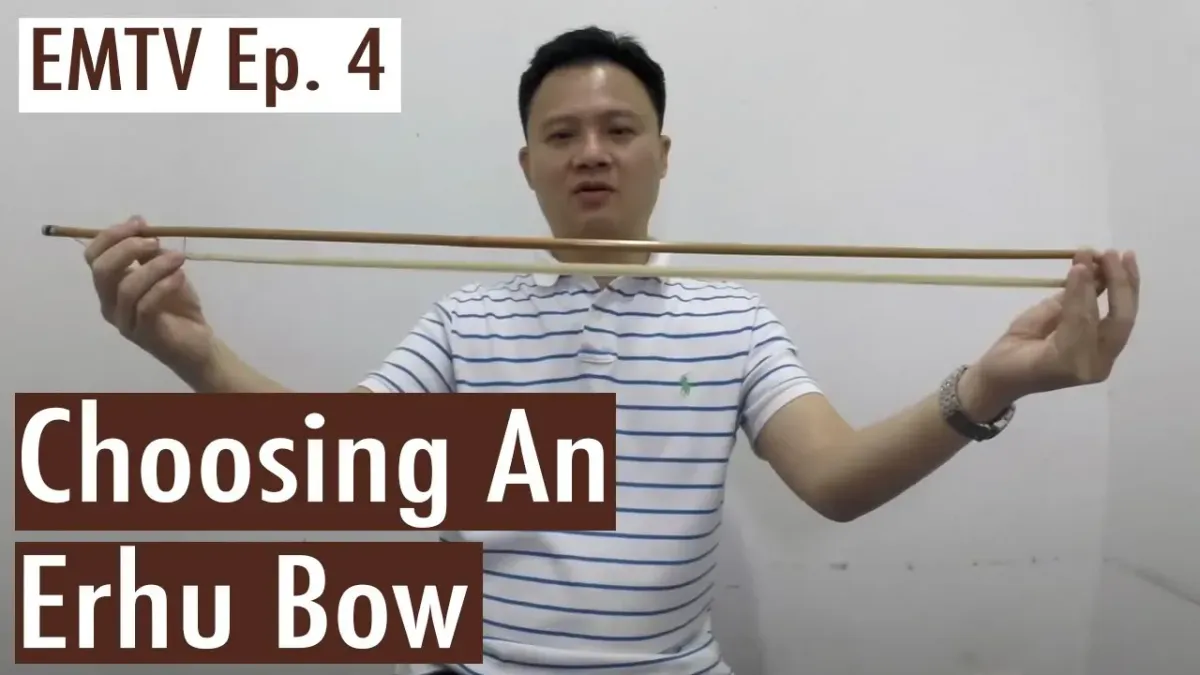Discover the latest in...
Erhu, Gaohu, Zhonghu

Choosing an Erhu Bow
Mastering the Art of Selecting Erhu Bows: A Player's Guide
As an Erhu player, I know how crucial the right bow is. It's not just an accessory, it's an extension of yourself, allowing you to express your musicality. In this guide, I'll share insights and tips I've learned on my Erhu journey to help you find your perfect match.
A Player's Perspective:
Over the years, I've come to appreciate the intricate art of selecting Erhu bows. Through trial and error, and conversations with other players, I've developed a practical approach that blends tradition with what works. This guide aims to be your roadmap to finding the ideal bow for your playing style.
The Two Main Bow Types:
First, let's explore the two primary Erhu bow types:
Shanghai Bow: This one requires twisting out the end pin for string attachment.
Beijing Bow: This bow features a hook for easy tension release and stringing.
There's no single "best" choice; it depends on your preference. Try holding each type and see how it feels in your hand. Comfort and control are key!
Understanding Bamboo Stiffness:
Another crucial factor is bamboo stiffness. It impacts how the bow plays:
Stiff Bamboo: Ideal for a louder, more resonant sound, but can be less agile for fast passages.
Thinner Bamboo: Easier for fast playing, but requires more control for slower pieces.
The sweet spot? A balance between the two! A bow that's neither too stiff nor too thin allows you to control volume comfortably.
Exploring Special Bows:
For those seeking a unique sound and look, there's the Spotted Bamboo (湘妃竹 - Xiāng Fēi Zhú). This lightweight yet stiff bamboo is a favorite among discerning players, but comes at a slightly higher cost. It has great flexibility and strength.
Straightness and Curvature Matter:
Always inspect the bow for straightness. Avoid bows with a natural bend, as it can affect your playing. While slight shipping bends can be fixed, inherent curvature is a red flag.
As for curvature, a gentle downward curve is ideal. Bows that curve upwards may bend too easily under pressure, impacting volume and control.
Getting Your Dream Bow:
Now that you're armed with knowledge, how do you get your perfect bow? If you can't visit a shop in person, I offer a bespoke selection service! Just let me know your preferences:
Stiffness preference: Stiff or flexible?
Bow type preference: Shanghai or Beijing?
Based on this, I can help you find a bow that matches your musical aspirations.
Your Erhu Journey Begins:
Choosing an Erhu bow is about finding a companion for your musical journey. My goal is to help you discover the perfect balance of tone, control, and playability. Whether you're aiming for soulful melodies or dazzling virtuosity, let your Erhu bow be the conduit of your musical expression. Click here for our Erhu bows store.
Here's a video about choosing your Erhu bow:
Unlocking the Secrets of Chinese Instruments (For Beginners & Beyond)
Welcome to the Eason Music blog & podcast, your gateway to the captivating world of Chinese musical instruments. From the enchanting melodies of the yangqin to the haunting tones of the erhu, join us as we share tips, tricks, and insights to enhance your journey into the realm of Chinese music. Whether you're a seasoned player or a curious beginner, uncover the secrets, techniques, and stories behind these timeless instruments with us. Welcome to the harmony of Eason Music.

